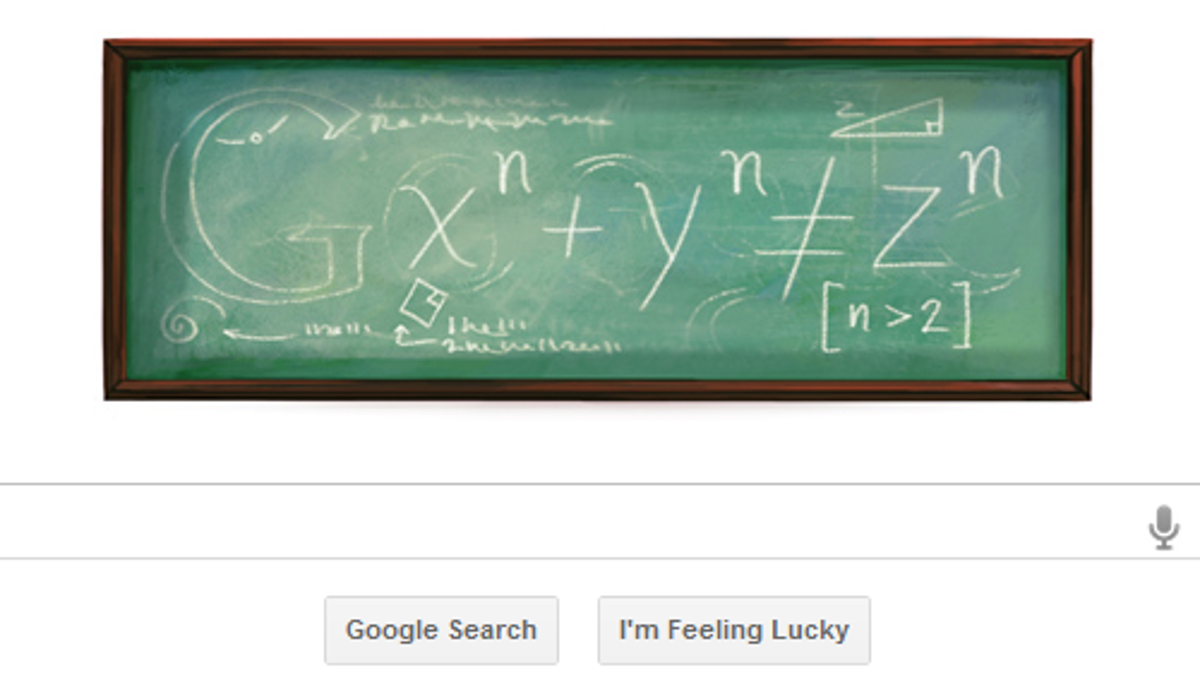Google's smartypants math doodle
Doodle celebrates mathematician Pierre de Fermat's 410th birthday, and drops a seriously nerdy inside joke.

It's another confusing day on Google.com, with a foreign-looking (for most of us) equation greeting visitors to the search engine's front page. Wednesday's Google doodle is a tribute to mathematician Pierre de Fermat on his 410th birthday.
de Fermat spent most of his life working as a lawyer, but became the father of modern number theory in his spare time. Apparently the lack of e-mail, Facebook, and Twitter in 17th century France allowed the smartypantses of the era to be a lot more productive.
The equation in Google's doodle, x^n + y^n = z^n, is better known as Fermat's Last Theorem. It was found in the margins of Fermat's copy of the ancient Greek text "Arithmetica," but his proof for the formula was never uncovered. A note was included with the equation in the margin that it was simply to large to include. Suspicions persisted for centuries that perhaps de Fermat never completed the proof, and it took more than 350 years for the world's mathematicians to work it out on their own. Andrew Wiles of the United Kingdom finally completed the proof--after years working in secret--in 1995.
Google's been getting a bit nerdier with its doodles of late, giving nods to scientists like Gregor Mendel, considered to be the father of modern genetics, and now this. The de Fermat doodle even contains an inside joke to appeal to those who make a habit of esoteric mathematics trivia. Mouse-over the doodle and the message displayed is a send-up of de Fermat's famous omission. It reads: "I have discovered a truly marvelous proof of this theorem, which this doodle is too small to contain."
A modified version of the joke and copy of the doodle image can be viewed on the Google Doodles team's Twitter feed.

